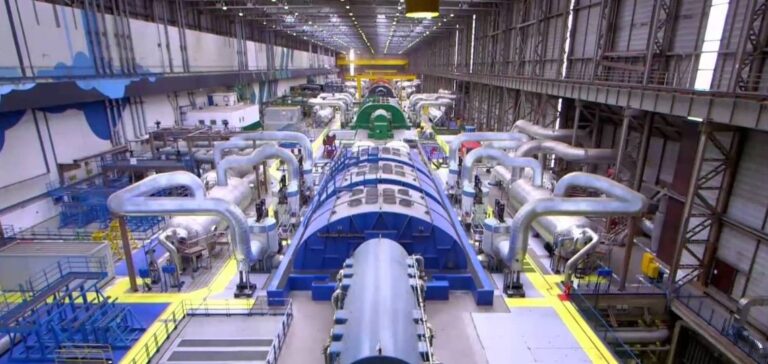At the Khmelnitskiy nuclear power plant in Ukraine, the first cubic meter of concrete was poured on Thursday for two new nuclear reactors.
These reactors, which will use technology and fuel supplied by the American company Westinghouse, represent a decisive step towards Ukraine’s energy independence.
The ceremony took place in the presence of Ukrainian and American flags, symbolizing their collaboration.
Response to aggression
“This is our answer to the terrorists, this is our answer to the invaders”, said Energy Minister German Galushchenko. The statement came hours after a Russian attack destroyed a power plant near Kiev. The Minister also added: “Today we are talking about the future, about stability”, underlining the importance of the project for Ukraine’s future energy security.
Energy security and sovereignty
The construction of reactors 5 and 6 at Khmelnitskiy, using Westinghouse’s AP1000 reactor technology, is seen as essential to reducing Ukraine’s dependence on Russian nuclear technology.
Energoatom, under the chairmanship of Petro Kotin, and Westinghouse have not announced a precise date for the reactors’ commissioning, but their completion will considerably strengthen Ukraine’s position in the energy field.
Future prospects and impacts
Minister German Galushchenko described the development of the Khmelnitskiy power plant as “the most important modernization project in Ukraine since the Second World War”.
With a capacity of over 1,100 megawatts per unit, these reactors will make Khmelnitskiy the largest nuclear power plant in Europe, surpassing Zaporijjia, in the words of Petro Kotin.
Although located in western Ukraine, an area considered relatively safe, the Khmelnitskiï plant remains a potential target for attack, due to its proximity to a major air base.
This context accentuates the importance of rapid, secure construction of the new reactors.






















